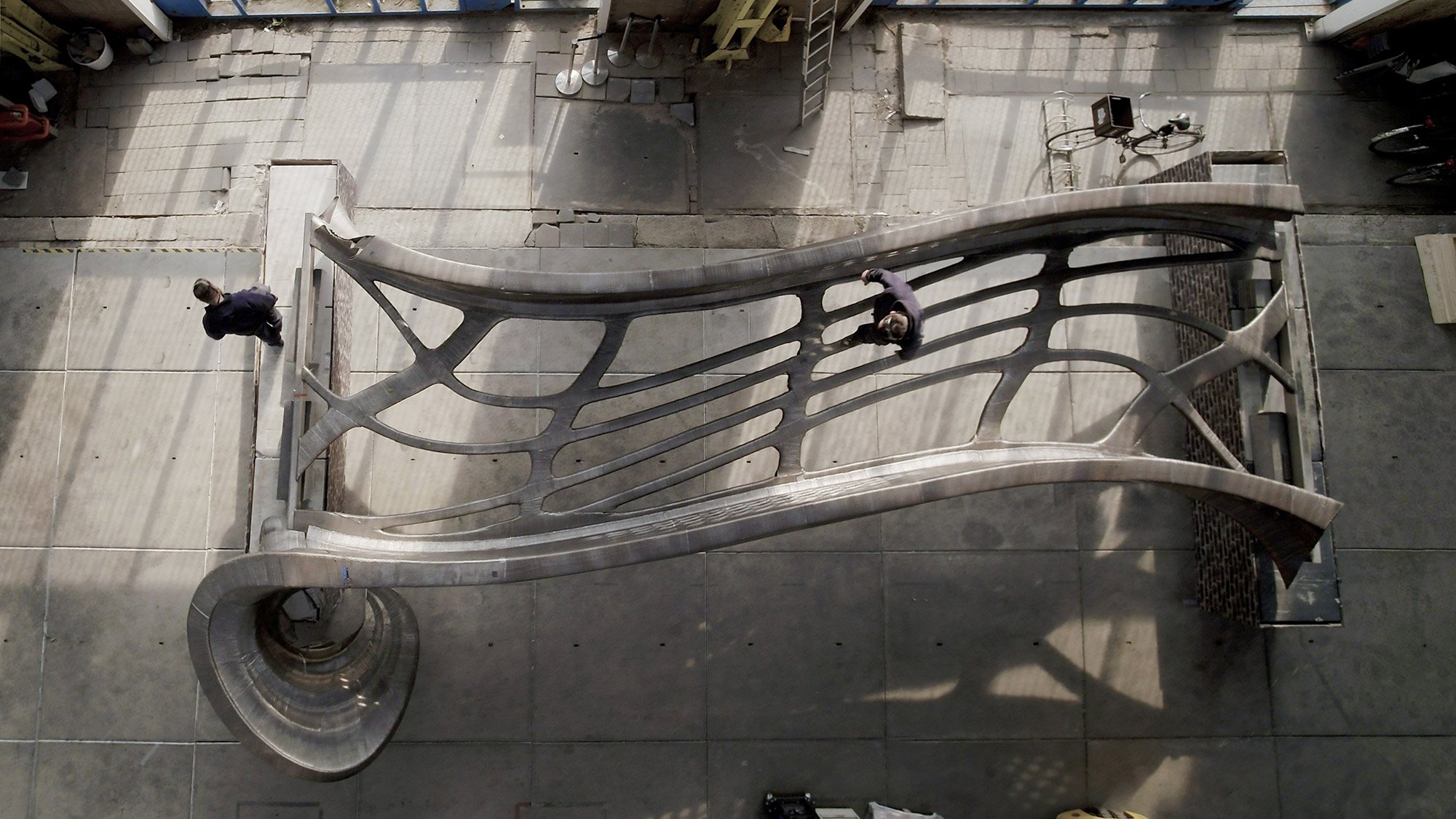 Hester Duijndam
Europe Press Office, Netherlands
Hester Duijndam
Europe Press Office, Netherlands
Amsterdam’s robot printed steel bridge has been completed, and will be on display in Eindhoven as part of Dutch Design Week (DDW) until October 28th.
The award-winning 3D printed pedestrian bridge, designed by Joris Laarman Lab with Arup as lead engineering partner, is expected to be installed in the heart of Amsterdam’s red light district towards the middle of next year.
The unique bridge will also act as a ‘living laboratory’ for data scientists. The bridge has been fitted with an innovate sensor network by Autodesk, Force Technology, Imperial College London, Lenovo & HBM to obtain data regarding traffic, structural integrity, and collect readings on its surrounds, neighbourhood and environment. During DDW, visitors are invited to walk over the bridge to generate the first data set.
Data from the bridge will be used by partners like The Alan Turing Institute, the UK’s national institute for data science and artificial intelligence, along with Autodesk to build a digital twin model, using advanced data analysis to monitor its performance in real-time.
The ongoing work on the 3D printed bridge will contribute to the future of safe, efficient and data-driven engineering, by monitoring the structure as thousands of people and bicycles traverse the bridge hourly.
Arup, the project’s lead engineer, and researchers from The Alan Turing’s Data Centric Engineering Programme - a consortium of researchers from Imperial College London and the University of Cambridge - performed a successful load test of 10+ tonnes in September. Comparisons between computer models predictions that the team developed and the results from this test will be made to demonstrate the load carrying capacity of the bridge and provide invaluable structural performance data.
